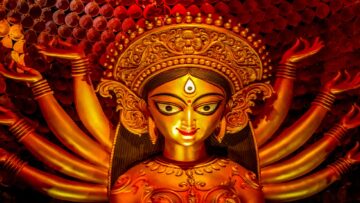India’s spiritual landscape is a rich and diverse tapestry, woven with the wisdom of numerous sages, gurus, poets, and scholars. I have always been curious about them and learn more about the differences between Muni and Rishi and learn about different kinds of gurus and sages and how they form Indian spiritual holarchy. These figures have shaped not only spiritual practices but also cultural and ethical norms across centuries through their writings, songs, mantras and teachings. Their profound contributions continue to influence millions globally, offering timeless insights into the human quest for meaning and transcendence.
Here is my take on various sages that I have come across and how they can be categorized. The list is obviously incomplete, and I greatly appreciate the advice I received from many spiritual teachers and scholars like Swami Bodhananda, Swami Chidananda, Raghu Anantanarayan, Prof. V. Krishna Murthy.
The Spiritual Archetypes
Indian spiritual traditions feature a variety of key roles, each with specific responsibilities and insights. These roles include Rishis, Munis, Gurus, and many others, each contributing uniquely to the spiritual and cultural fabric of India. To understand their significance, we categorize these figures into specific roles, highlighting both ancient and modern examples.
Categories of Sages and Spiritual Figures
1. Seers and Philosophers: Rishis and Munis
Rishis are ancient seers known for their divine revelations and compositions of Vedic hymns. They are the original researchers and conveyors of spiritual knowledge, credited with composing the Vedas and giving us various mantras like Gayathri. Examples include:
- Vasishta and Vishwamitra: Their hymns reflect a deep understanding of the cosmos and human existence, emphasizing the harmony between nature and the divine.
- Gargi Vachaknavi and Maitreyi: Known for their profound dialogues (with Sage Yagnavalka Rishi) on metaphysics in the Brihadaranyaka Upanishad, their questions and insights challenge conventional norms and encourage deep contemplation.
Munis are sages who delve deeply into meditation and scholarly works, often compiling and elucidating existing spiritual knowledge. There can be some overlap in the roles of Rishis and Munis. While Rishis are traditionally credited with composing original revelations, Munis can also be involved in creative interpretations and compilations. Munis are recognized for their profound understanding and ability to elucidate complex doctrines. There is a fluidity between the two roles.
According to Raghu Anantanarayan, a Muni is traditionally associated with deep meditation and silence (mauna). During periods of intense focus (dhāraṇā), a Muni compiles and systematizes existing knowledge rather than originating it, crafting authoritative texts on spiritual and philosophical subjects. They are recognized for their profound understanding and ability to elucidate complex doctrines. Examples of Munis include:
- Bharata Muni: His Natya Shastra is not just a treatise on performing arts but a reflection on the emotional and spiritual power of drama and dance.
- Gargi Vachaknavi: Through her rigorous inquiry, she exemplifies the Muni’s dedication to uncovering and articulating profound truths. In the book A Quest for Roots: Stree Shakti, Mody, Rekha writes that Gargi, as Brahmavadini, composed several hymns in Rigveda (in X 39. V.28) that questioned the origin of all existence. Gargi was one of the Navaratnas (nine gems) in the court of King Janaka of Mithila, according to an entry in Wikipedia.
2. Great Seers: Maharshis and Brahmarshis
Maharshis and Brahmarshis are recognized for their profound spiritual attainments and contributions to epic literature. Examples include:
- Valmiki: The author of the Ramayana, whose transformation from a hunter to a sage highlights the power of repentance and spiritual awakening. In the modern times, Mahesh Yogi, who came up with Transcendental Meditation was referred to as Maharishi by his followers.
- Vasishta and Vishwamitra: Their narratives in texts like the Mahabharata and Ramayana illustrate their roles as guides and mentors to kings and heroes.
3. Divine Intermediaries: Devarshis and Rajarshis
Devarshis serve as intermediaries between gods and humans, often involved in celestial affairs. Example:
- Narada: Known for his wisdom and musical prowess, Narada travels between realms, offering guidance and stirring devotion through his bhajans and stories.
Rajarshis are royal sages who balance spiritual wisdom with kingly duties. Example:
- Janaka: The philosopher-king, Janaka embodies the ideal of ruling with wisdom and detachment, as seen in his dialogues with sages like Yajnavalkya.
4. Spiritual Teachers: Paramahamsas, Gurus, and Acharyas
Paramahamsas are regarded as the highest spiritual teachers, exemplifying ultimate spiritual wisdom. Example:
- Ramakrishna Paramahamsa: His life and teachings emphasize the universality of all religions, reminding us that all paths lead to the same divine truth.
Gurus and Jagadgurus are revered for their ability to remove ignorance and guide disciples towards self realization and seem to come from different walks of life. While the title Jagadguru translates to “universal spiritual teacher,” it’s often used as a title bestowed upon specific lineage leaders within certain schools of Hinduism. Examples include:
- Adi Shankaracharya: He traveled across India to revive and consolidate the philosophy of Advaita Vedanta, emphasizing the non-dual nature of reality. Sri Ramanujacharya and Sri Madhwacharya are other two known as Jagadgurus even though their names contain the title of Acharya.
In modern context, here are two more acharyas who are considered to be extraordinary teachers.
- Jiddu Krishnamurti: His teachings transcended traditional religious boundaries (though some associate him more with Buddhist leanings), encouraging self-inquiry and the understanding of psychological conditioning. He broke out of Theosophical Society and dissolved the Order of the Star saying that “truth is a pathless land” and had a long and profound influence on 20th century thinkers and philosophers.
- Anandamayi Ma: Her serene presence and profound teachings attract seekers from all walks of life, offering a living example of divine love and compassion.
Acharyas are scholarly teachers who provide philosophical and ethical guidance and are not necessarily considered to be Gurus because they do not necessarily lead others to self realization. Examples include:
- Chanakya: His Arthashastra remains a foundational text on governance and ethics.
- Nagarjuna: His works on Madhyamaka philosophy revolutionized Buddhist thought, offering deep insights into the nature of emptiness.
5. Ascetics and Renunciates: Sadhus, Sannyasis, Tapasvis, and Vairagis
These figures are known for their dedication to asceticism and renunciation, leading lives of spiritual discipline. Examples include:
- Swami Sivananda: His teachings on health, yoga, and spiritual practice continue to inspire millions.
- Akkamahadevi: Her intense devotion to Shiva and poignant poetry reflect the transformative power of divine love.
6. Enlightened Beings: Jnanis and Siddhas
Jnani denotes enlightened beings who attain knowledge through direct experience. Example:
- Ramana Maharshi: His simple yet profound method of self-inquiry in the 20th century has guided countless seekers towards self-realization.
Siddhas are perfected beings known for their supernatural abilities and deep spiritual insights. Example:
- Bogar: His contributions to Siddha medicine and alchemy are still revered in Tamil culture.
7. Devotional Saints: Sants and Bhakti Poets
Sants are devotional saints who are also known as mystics and express their spiritual experiences through poetry and music. Examples include:
- Mirabai: Her bhajans to Krishna reflect an all-consuming devotion that transcends social and familial ties.
- Kabir: His dohas challenge the rigidities of organized religion, advocating a direct, personal relationship with the divine.
- Lalleshwari (Lal Ded): Her mystical poetry in Kashmiri language reflects deep spiritual insights and devotion.
- Tyagaraja, Purandara Dasa, Muthuswami Dikshitar are other examples of saints who used their devotional south Indian (Carnatic) music to influence millions centuries after their death.
8. Religious Leaders: Mahants and Monastic Heads
Mahants are heads of monasteries or temple complexes, responsible for overseeing spiritual and administrative functions. Examples include:
- Various historical and modern leaders in Hindu and Sikh contexts, who ensure the preservation and dissemination of their respective traditions.
Modern-Day Sages Compared to Ancient Sages
In the context of today’s world, modern sages continue to inspire and guide through various means, adapting ancient wisdom to contemporary issues. They are accessible through digital media, social networks, and global platforms, making their teachings more widely available than ever before. Here’s how modern-day sages connect with today’s youth compared to ancient sages:
Accessibility and Outreach:
- Ancient Sages: Disseminated knowledge primarily through oral traditions, scriptures, and localized teachings.
- Modern Sages: Use digital platforms, social media, and online courses to reach a global audience. For instance, Sadhguru Jaggi Vasudev offers online programs and has a strong presence on social media, making ancient teachings accessible to the youth.
Relevance to Contemporary Issues:
- Ancient Sages: Focused on timeless spiritual truths and foundational philosophies.
- Modern Sages: Address contemporary issues such as mental health, environmental sustainability, and personal development. They often integrate traditional wisdom with modern science and psychology, appealing to younger generations seeking holistic well-being. For example, Sri Sri Ravishankar’s teachings on Sudarshana Kriya meditation and peace resonate with modern concerns about mental health and stress management.
Interactive Engagement:
- Ancient Sages: Engaged with disciples through direct, personal interactions in ashrams or spiritual gatherings.
- Modern Sages: Engage with followers through interactive webinars, live Q&A sessions, and social media interactions, allowing for a more personalized and immediate connection. This approach helps demystify spirituality and make it more relatable to the youth.
Role of Women:
- Ancient Sages: Female sages were fewer and often less documented other than Gargi, Maitreyi, Mirabai.
- Modern Sages: There is greater visibility and recognition of female spiritual leaders today, such as Mata Amritanandamayi (Amma) and Sri Sri Anandamayi Ma, who are celebrated for their contributions and leadership in spiritual and social causes.
Conclusion
This overview of spiritual figures in Indian tradition is created to deepen our understanding of the spiritual landscape but also underscore the universal themes of truth, righteousness, and transcendence. By exploring the lives and teachings of these figures, we gain valuable insights into human nature and the quest for meaning, relevant across all cultures and eras. Modern sages continue this legacy, connecting ancient wisdom with contemporary relevance, thereby resonating with today’s youth and addressing the spiritual needs of a global community. I marvel at the diverse and inclusive nature of Indian spirituality and my quest is still incomplete as there is so much I need to learn to fill the gaps in this article.
Detailed Overview of Spiritual Titles
To provide clarity and a deeper understanding of the various spiritual titles, the following table categorizes these figures, outlines their roles, lists notable examples, and cites relevant sources:
Disclaimer: The opinions expressed in this article belong to the author. Indic Today is neither responsible nor liable for the accuracy, completeness, suitability, or validity of any information in the article.













